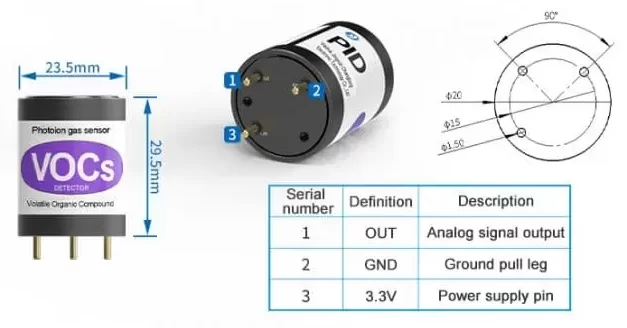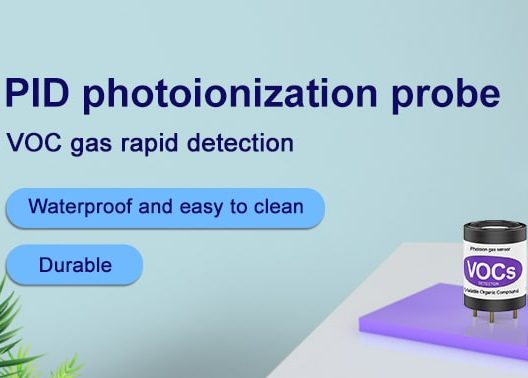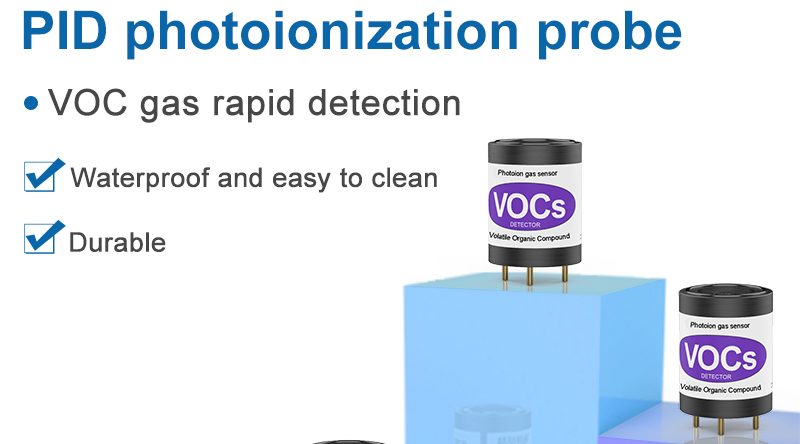Understanding the pid voc sensor
PID voc sensor are commonly used to monitor VOC’s (Volatile Organic Compounds). Many gases and vapours fall under the VOC banner and JXCT’s PID’s can monitor for over 60 VOC gas species. This makes a PID an ideal first responder for VOC leaks even though the PID cannot directly determine the gas type detected. – See here to learn more about VOC gases.
For example, in a chemical plant where both propylene and acetone are present, a PID detector will detect a leak from either. In both cases, the PID will report leak detection at the ppm level. However, PID cannot determine whether leakage is detected by acetone or propylene. For this reason, PID is the first responder for leak detection. Neither gas should exist in the atmosphere. PID can identify leaks that have occurred, but identifying the source of the leak needs to be undertaken by competent personnel.

Using the PID as a fixed gas leak detector can be part of risk mitigation.
In doing so, there are several factors to consider:
When doing so several factors need to be considered:
1. PID’s are first responders in that they are not specific to one gas but respond to many. If a specific gas detector is available for the target gas then this would usually be the more appropriate choice. For example, PID’s can detect Hydrogen Sulphide but specific Hydrogen gas detectors are readily available and would be a better choice than fitting a PID for this application.
2. PID’s respond to a whole host of VOC’s.You need to consider false alarms that exist in application areas that you have not consider. For example, correctly sited PID detectors in a factory producing Cyanoacrylates can give excellent results to protect workers from emissions; ensuring processes are secure and well ventilated. However, placing the same detectors onto a vehicle production line, to help protect workers using adhesives in the production, could lead to poor results. In this case the new vehicles coming down the line are emitting all sorts of VOC’s from new paintwork, waxes, oils, solvents etc. All these VOC’s will be detected along with any VOC emissions from adhesives being used at particular workstations. So in this application it would not be possible to just isolate VOC’s from the adhesives as the factory has a high potential VOC background.
3. PID’s use ultra-violet light to ionise the sample gas stream. Some gases and vapours can react photochemically and form compounds that can coat the internal surfaces of the PID causing reduced sensitivity or in some cases device failure. Phosphine is a good example of such a compound. Use PID to detect low levels of phosphine and be the first responder to occupational exposure levels. However, it undergoes a photochemical reaction to produce a substance that oxidizes phosphorus, which affects performance. At low levels, this can be considered during calibration.
Where significant exposure is likely to occur, should we clean the PID. Phosphine detection is a good example where there are alternative detector technologies but handling phosphine for calibration is less than desirable making the PID a potentially better alternative. However as can be seen, it is important to fully understand the application when making a detector choice.
4. PID’s can be adversely affected in dirty applications or where other non-responsive gases are present. Humidity can introduce leakage currents or refract the UV light resulting in lower sensitivity. JXCT PID’s use an industry unique electrode stack design. Plus our unique electrode stack design also minimises false readings where possible and extend PID sensor life by as much as 200% longer than current PID technology. These can reduce sensitivity where other gases do not respond to PID, and the energy of the UV rays is absorbed when it collides with molecules other than the target gas. Therefore, it is important to understand the characteristics of applied PID.
PID detectors are a good choice for your leak detection

JXCT are here to help with that answer and ensure you make the right choice. With 8 years of dedicated gas detection manufacturing, combined with over two decades of PID VOC sensor, we are the world’s experts in VOC detection. PID’s may be the correct choice but if an Infra-Red, Electrochemical, Catalytic or Semiconductor based detector offers a better solution then JXCT can advise accordingly as we manufacture all these types making us uniquely placed to help you make your sensor choice. Our projects teams will be able to assist with this and help with choosing the right sensor technology for your application, after all each application is unique.
If a PID is the right choice for your application, then there are several types available to meet the exact needs of your application.
